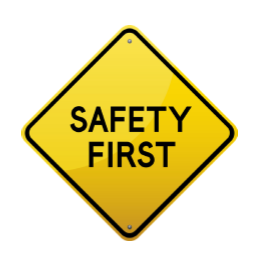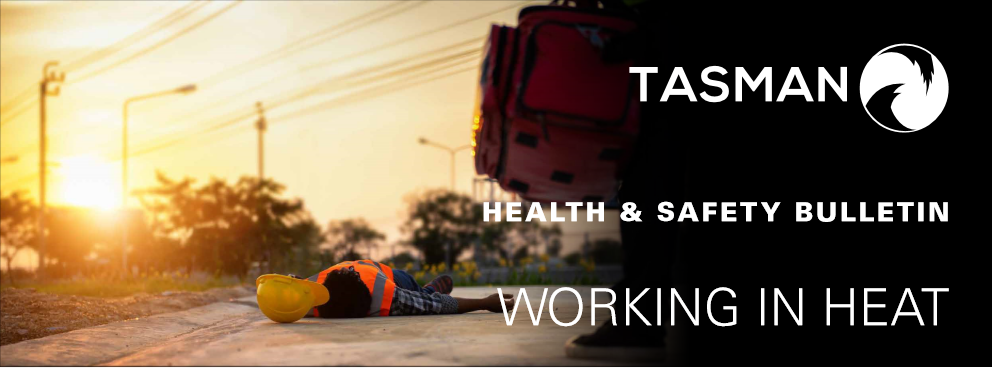Health & Safety Bulletin – Working In Heat – Jan 20
This Safety Bulletin provides guidelines for dealing with heat illness and related health and safety problems at workplaces. It contains recommended actions and measures to prevent and minimise the likelihood of heat illness.
Heat illness covers a range of medical conditions that can arise when the body is unable to properly cope with working in heat. These conditions include:
- Heat stroke – a life threatening condition that requires immediate first aid and medical attention.
- Fainting.
- Heat Exhaustion.
- Heat cramps.
- Rashes (also called as prickly heat)
- Heat Fatigue.
- Worsening of pre-existing illness and conditions.
Heat Illness Hazards
The risk factors that need to be considered in identifying health hazards are as follows:
- Air temperature.
- Humidity.
- Radiant heat from the sun.
- Air movement or wind speed.
- Nature of work and duration.
- Physical fitness.
- Clothing including PPE.
Heat Illness Prevention
The risks for heat illness can be minimised by taking into consideration the following:
- Providing extra rest breaks in a cool area.
- Using mechanical aids to reduce physical exertion.
- Providing cool drinking water near the work site. During hot weather, all workers are encouraged to drink a glass of water every 15 to 20 minutes.
- Providing PPE such as wide brim hat, loose fitting, long sleeve cotton shirt, sunscreen, sunglasses.
- Providing workers with information and instruction on recognising heat- related illness.
- Providing first aid facilities and access to medical help.
Related Health and Safety Problems
Apart from heat illness, hot working conditions may either contribute to or cause other health and safety problems, these include:
- Loss of grip while handling tools, objects and controls due to sweaty hands.
- Slips, trips, and falls due to fainting and fatigue.
- Errors/mistakes due to heat fatigue.
- Not following safe work procedures or cutting corners.
- Not using PPE due to discomfort.
- Burns from contact with hot surfaces or substances.
Heat Discomfort
Heat discomfort is what many people feel when it is hot. It is not a medical condition like heat illness.
Heat discomfort can be generally managed by:
- Increasing air movement.
- Providing air conditioning.
- Providing access to cool water.
- Wearing suitable, light loose fitting and clothing.


